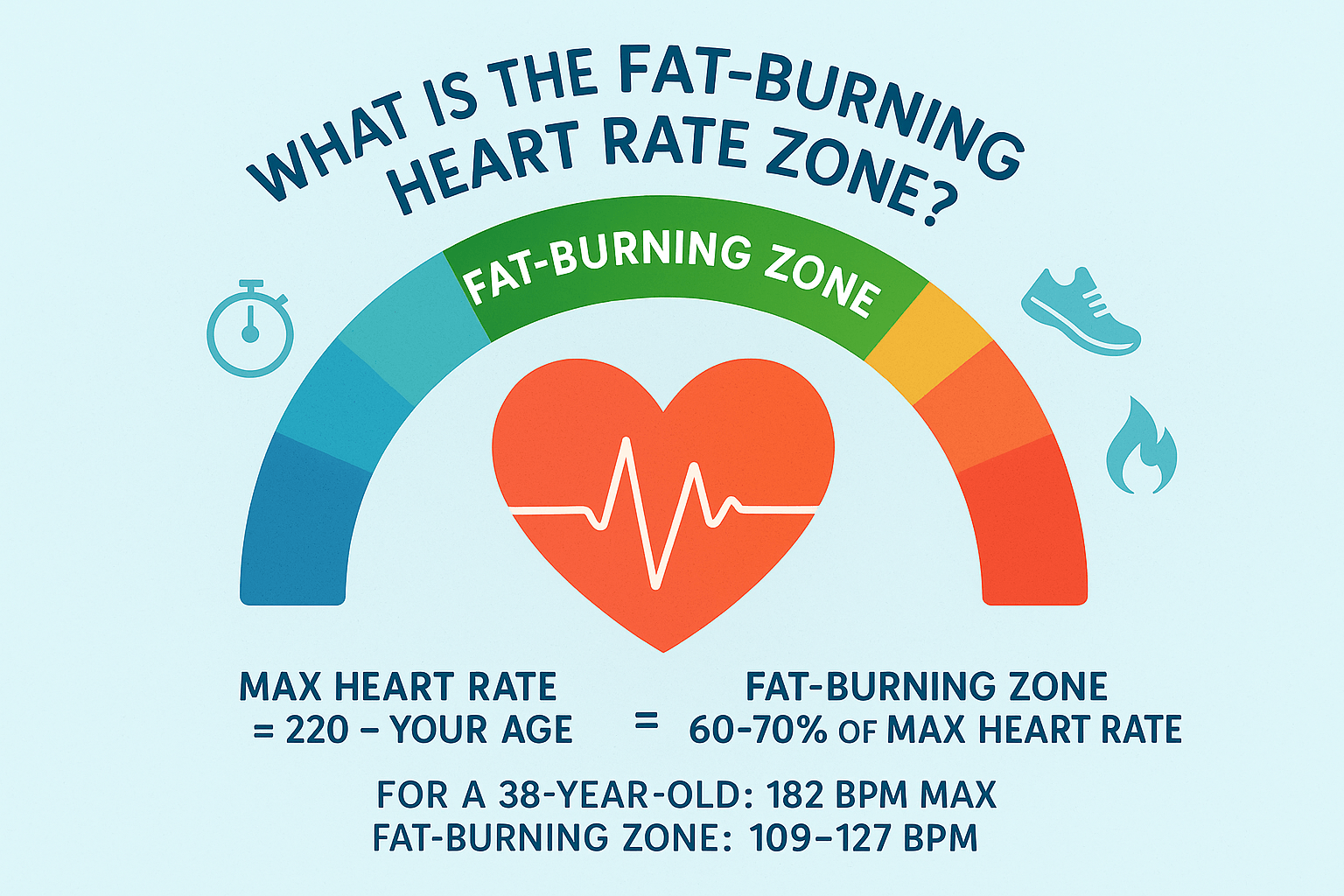You’ve probably heard of the “fat-burning heart rate” zone, but what does it really mean?
Is running slow the secret to losing fat, or is there more to it?
Here’s the deal: your heart rate tells you how hard you’re working, but it’s not some magic number.
The fat-burning zone is where your body burns fat most efficiently—usually around 60-70% of your max heart rate.
But things are not that simple.
In this article, I’ll break down how to find your fat-burning zone, why mixing up your workouts matters, and how to use your heart rate to run smarter and burn more fat.
Ready to stop guessing and start training smarter?
Let’s get to it.
What’s the Fat-Burning Heart Rate Zone?
Alright, here’s what you need to know. You’ve probably heard the term “fat-burning heart rate” tossed around, but what does it actually mean?
When I first heard about it—I thought there was some magic formula to lose fat without effort!
Here’s the real deal: the ‘fat-burning heart rate’ is just the point where your body starts burning fat more efficiently during exercise.
It’s not about just jogging at a snail’s pace—it’s a sweet spot where you’re working, but still able to keep going.
For most folks, this zone is somewhere around 60-70% of your max heart rate. Now, you might be wondering, “How do I find that out?”
Don’t stress, it’s really simple.
Here’s how you do it: 220 minus your age = your max heart rate.
For example, I’m 38, and my max heart rate is 182. To find my fat-burning zone, I aim for 60-70% of that, which puts me between 109-127 beats per minute.
I remember when I figured this out for the first time. I was out on a run, and honestly, I had no clue if I was in the “fat-burning zone” or not. But once I figured out the numbers, it gave me a target to aim for.
I know I know. This formula might be an oversimplification and might not work for everyone. But overall, it’s a good reference point.
Fat-Burning vs. Cardio: What’s the Difference?
You know about the fat-burning zone, but let’s talk about what happens when you push harder into the cardio zone.
In the fat-burning zone, you’re burning a higher percentage of fat while exercising at lower intensities.
But when you hit the cardio zone, you’re working harder and burning more calories. It sounds a little backwards, doesn’t it?
When you hit the cardio zone, you’re working harder, burning more total calories—and even though you burn a smaller percentage of fat, you end up burning WAY more fat overall.
Here’s the kicker: high-intensity workouts burn through your body’s quick energy stores (glycogen).
And once that runs out? You guessed it—your body switches to burning fat for fuel.
Here’s my best tip for you: Don’t get too hung up on the exact numbers.
Your body is burning fat all the time, whether you’re in the fat-burning zone or pushing hard in the cardio zone.
You just have to challenge it properly. Switch things up! Try some faster runs or intervals now and then. That’s how you get your body to really adapt.
How to Find Your Sweet Spot: Fat-Burning Heart Rate Training
Now that you’ve got the math down, let’s talk strategy.
If fat loss is your goal, aim to spend at least 30 minutes in that fat-burning heart rate zone.
Not sure if you’re there? Use the talk test.
If you can hold a conversation without gasping for air, you’re probably in the sweet spot.
If you’re gasping for breath and can’t string more than a word or two together—you’re definitely in the cardio zone. And that’s fine too! It’s great for overall fitness.
Don’t stress if you’re not always in the fat-burning zone. Mix in some higher-intensity work (like intervals) to burn fat in different ways. Your body loves variety, and it’ll keep adapting.
What’s Better: Fat-Burning or Cardio?
Fat burning is important, but cardio has its place, too. When I first started running, I was obsessed with staying in the fat-burning zone.
I thought the only way to shed fat was through those slow, long runs.
But then I started adding in some sprint intervals.
And guess what? My legs got leaner, my stamina shot up, and I felt faster.
That’s when I realized: you don’t have to live in the fat-burning zone to see results.
Over time, I realized I was holding myself back. High-intensity workouts, like sprints or hill repeats, burn more calories overall—and help you get leaner faster—even if you’re not in the fat-burning zone the whole time.
So, mix it up. Use both fat-burning and high-intensity cardio for the best results.
How to Track Your Heart Rate While Running
You don’t need some fancy monitor to track your heart rate, but it sure helps. The simplest way? Grab your phone, pause mid-run, and use an app to check your pulse.
Easy, right? But if you want something a bit more accurate, I’d recommend investing in a heart rate monitor. There are wristband monitors out there that track your heart rate, steps, calories burned, and more.
Here’s my best tip for you: If you’re serious about consistency, use a chest strap monitor. It gives you the most reliable readings and lets you keep pushing without constantly stopping to check your phone.
Conclusion
Bottom line? Consistency and variety. Find your fat-burning zone, but don’t be afraid to step out of it every now and then.
You’re not just training your body to burn fat—you’re getting stronger, faster, and more efficient.
Stick to your training, mix in some intervals, and remember: progress isn’t just about your heart rate.
“Every run, every sweat session, you’re building the runner you want to become.
Keep showing up—and trust me, those results? They’ll come.”
Summary / Key Takeaways
- Running alone isn’t a magic fix for weight loss.
- Strength training helps build muscle and burns more fat.
- Consistency is the key to seeing real results.
FAQ:
How do I calculate my fat-burning heart rate? Subtract your age from 220 to get your max heart rate. Then aim for 60-70% of that number to hit the fat-burning zone.
How many calories do I burn per mile running? On average, you burn about 100-150 calories per mile, depending on your speed and body type.
Can I still burn fat if I’m not in the fat-burning zone? Yes, you can! High-intensity workouts burn more calories overall, even if you’re not in the fat-burning zone.
How long should I stay in the fat-burning zone? Aim for at least 30 minutes in the fat-burning zone for optimal fat loss.
Is it better to run at a slow pace for longer or run faster for shorter times? Both have their benefits! Slow runs burn fat efficiently, while fast runs burn more calories overall.




